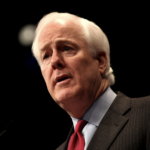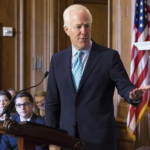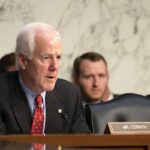Following the catastrophic flooding in Central Texas that claimed at least 137 lives, U.S. Senator Ted Cruz (R) has reintroduced the NOAA Weather Radio Modernization Act, a bipartisan effort aimed at strengthening emergency communications systems nationwide particularly in rural and underserved areas.
“The flooding in Central Texas has been absolutely heartbreaking, and we continue to lift up all those affected in prayer,” Cruz said. “Texans are strong and resourceful, but when disaster is about to strike, there has to be multiple, reliable ways to notify those who are in harm’s way.”
Cruz, who chairs the Senate Commerce Committee, is leading the legislation alongside Ranking Member Maria Cantwell (D-Wash.). The bill would overhaul NOAA’s aging weather radio infrastructure by expanding coverage into regions with little or no mobile broadband, increasing the reliability of life-saving alerts during weather emergencies and other disasters.
Cruz emphasized that many victims of the July 4 floods never received warnings due to a lack of cell service.
“This legislation is about protecting our communities and saving lives, and I urge Congress to pass it quickly,” he said.
The legislation also tasks the National Institute of Standards and Technology (NIST) with developing standards for flash flood alerts in the 100-year floodplain, an effort to reach those without access to mobile alerts, broadband, or satellite coverage.
While Cruz focuses on upgrading federal weather infrastructure, fellow Texas Senator John Cornyn is urging the Federal Communications Commission (FCC) to take a broader look at the nation’s emergency alert systems.
In a letter sent to FCC Commissioner Brendan Carr ahead of the agency’s August Open Commission Meeting, Cornyn called on the Commission to review how alert systems performed during the Central Texas floods.
With both of Texas’s U.S. Senators now pressing for improved alert systems, from NOAA radio upgrades to broader FCC policy review, the push for more resilient emergency communication infrastructure has taken center stage in Washington.











